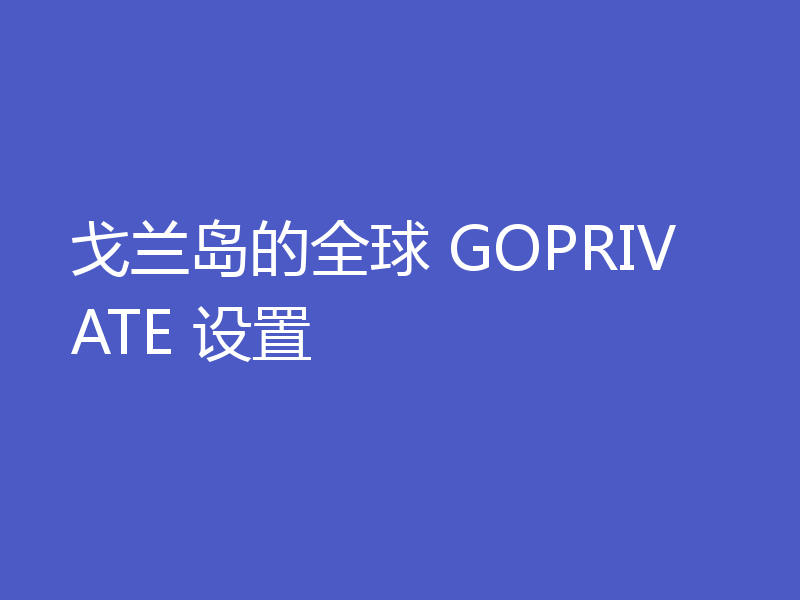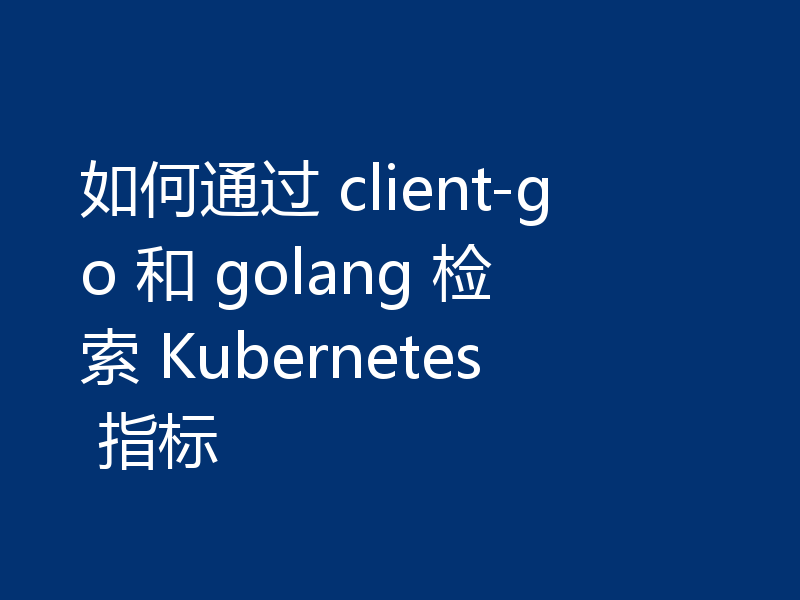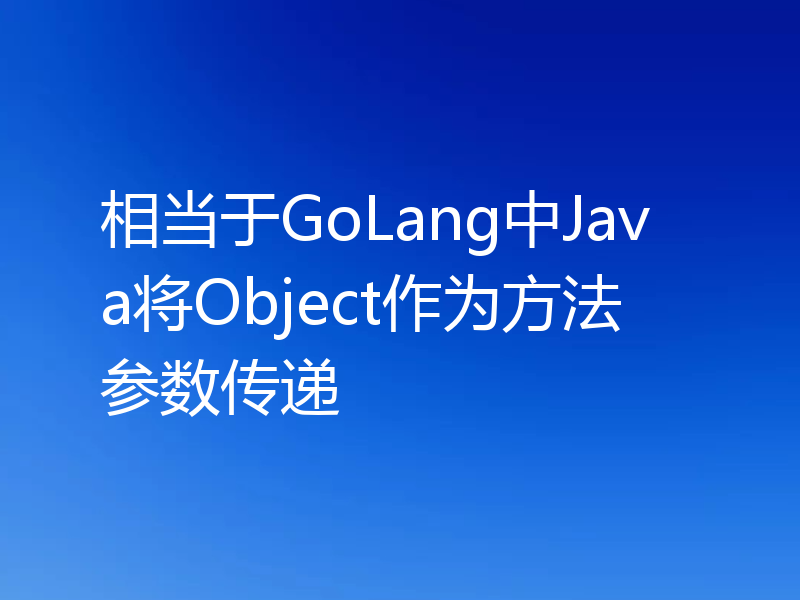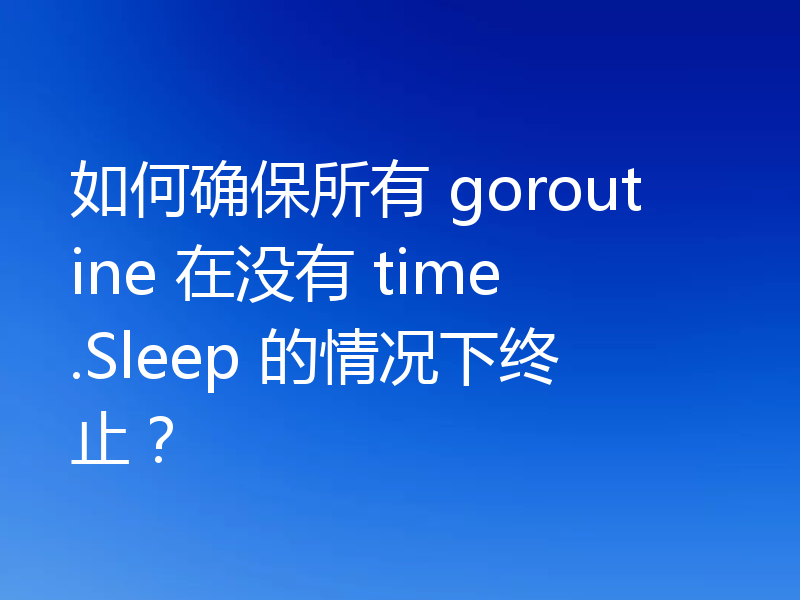Why does a pointer to a local variable escape to the heap?
golang学习网今天将给大家带来《Why does a pointer to a local variable escape to the heap?》,感兴趣的朋友请继续看下去吧!以下内容将会涉及到golang等等知识点,如果你是正在学习Golang或者已经是大佬级别了,都非常欢迎也希望大家都能给我建议评论哈~希望能帮助到大家!
问题内容
Here is my go environment:
[lorneli@localhost GoTest]$ go version go version go1.9 linux/amd64
Here is my program:
package main
type request struct {
ID string
size uint32
off uint64
}
func main() {
r := request{}
iter := interface{}(&r) // &r escapes to heap
iters := make([]interface{}, 0)
iters = append(iters, iter)
}
I allocate a request instance and convert the pointer of it to
interface{}. But when analysing with flag -gcflags "-m" , I found out the
instance escapes to heap when converting. Why this happens?
Here is analysing result:
[lorneli@localhost GoTest]$ go build -gcflags "-m"
# _/mnt/hgfs/vmfolder/workspace/GoTest
./main.go:9:6: can inline main
./main.go:11:21: (interface {})(&r) escapes to heap
./main.go:11:22: &r escapes to heap
./main.go:10:15: moved to heap: r
./main.go:12:15: main make([]interface {}, 0) does not escape
I think this case doesn't match any cases listed on "Go Escape Analysis Flaws".
正确答案
Simplify your example. Analyze with -gcflags='-m -m'.
Example 1 :
package main
func main() {
var v int
s := make([]*int, 0)
s = append(s, &v) // &v escapes to heap
}
Output:
$ go version
go version devel +df8c2b905b Tue Mar 6 06:13:17 2018 +0000 linux/amd64
$ go run -gcflags='-m -m' esc.go
# command-line-arguments
./esc.go:3:6: can inline main as: func() { var v int; v = <n>; s := make([]*int, 0); s = append(s, &v) }
./esc.go:6:16: &v escapes to heap
./esc.go:6:16: from append(s, &v) (appended to slice) at ./esc.go:6:12
./esc.go:4:6: moved to heap: v
./esc.go:5:11: main make([]*int, 0) does not escape
$
</n>
Escape analysis determines whether any references to a value escape the
function in which the value is declared. A reference to the variable v,
declared in function main, escapes as an argument to function append: &v escapes to heap from append(s, &v), moved to heap: v.
Example 2 :
package main
func main() {
var v int
lc := 1
s := make([]*int, lc)
s[0] = &v
}
$ go run -gcflags='-m -m' esc2.go
./esc2.go:3:6: can inline main as: func() { var v int; v = <n>; lc := 1; s := make([]*int, lc); s[0] = &v }
./esc2.go:6:11: make([]*int, lc) escapes to heap
./esc2.go:6:11: from make([]*int, lc) (too large for stack) at ./esc2.go:6:11
./esc2.go:7:9: &v escapes to heap
./esc2.go:7:9: from s[0] (slice-element-equals) at ./esc2.go:7:7
./esc2.go:4:6: moved to heap: v
$
</n>
type slice struct {
array unsafe.Pointer
len int
cap int
}
make for a slice returns a slice descriptor struct (pointer to underlying
array, length, and capacity) and allocates an underlying slice element array.
The underlying array is generally allocated on the heap: make([]*int, lc) escapes to heap from make([]*int, lc).
s[0] = &v stores a reference to the variable v (&v) in the underlying
array on the heap: &v escapes to heap from s[0] (slice-element-equals),
moved to heap: v. The reference remains on the heap, after the function ends
and its stack is reclaimed, until the underlying array is garbage collected.
If the make slice capacity is a small (compile time) constant, make([]*int, 1) in your example, the underlying array may be allocated on the stack.
However, escape analysis does not take this into account.
以上就是本文的全部内容了,是否有顺利帮助你解决问题?若是能给你带来学习上的帮助,请大家多多支持golang学习网!更多关于Golang的相关知识,也可关注golang学习网公众号。
 使用 mgo 进行部分更新
使用 mgo 进行部分更新
- 上一篇
- 使用 mgo 进行部分更新

- 下一篇
- partial update using mgo
-

- Golang · Go问答 | 1年前 |
- 在读取缓冲通道中的内容之前退出
- 139浏览 收藏
-

- Golang · Go问答 | 1年前 |
- 戈兰岛的全球 GOPRIVATE 设置
- 204浏览 收藏
-

- Golang · Go问答 | 1年前 |
- 如何将结构作为参数传递给 xml-rpc
- 325浏览 收藏
-

- Golang · Go问答 | 1年前 |
- 如何用golang获得小数点以下两位长度?
- 478浏览 收藏
-

- Golang · Go问答 | 1年前 |
- 如何通过 client-go 和 golang 检索 Kubernetes 指标
- 486浏览 收藏
-

- Golang · Go问答 | 1年前 |
- 将多个“参数”映射到单个可变参数的习惯用法
- 439浏览 收藏
-

- Golang · Go问答 | 1年前 |
- 将 HTTP 响应正文写入文件后出现 EOF 错误
- 357浏览 收藏
-

- Golang · Go问答 | 1年前 |
- 结构中映射的匿名列表的“复合文字中缺少类型”
- 352浏览 收藏
-

- Golang · Go问答 | 1年前 |
- NATS Jetstream 的性能
- 101浏览 收藏
-

- Golang · Go问答 | 1年前 |
- 如何将复杂的字符串输入转换为mapstring?
- 440浏览 收藏
-

- Golang · Go问答 | 1年前 |
- 相当于GoLang中Java将Object作为方法参数传递
- 212浏览 收藏
-

- Golang · Go问答 | 1年前 |
- 如何确保所有 goroutine 在没有 time.Sleep 的情况下终止?
- 143浏览 收藏
-

- 前端进阶之JavaScript设计模式
- 设计模式是开发人员在软件开发过程中面临一般问题时的解决方案,代表了最佳的实践。本课程的主打内容包括JS常见设计模式以及具体应用场景,打造一站式知识长龙服务,适合有JS基础的同学学习。
- 543次学习
-

- GO语言核心编程课程
- 本课程采用真实案例,全面具体可落地,从理论到实践,一步一步将GO核心编程技术、编程思想、底层实现融会贯通,使学习者贴近时代脉搏,做IT互联网时代的弄潮儿。
- 516次学习
-

- 简单聊聊mysql8与网络通信
- 如有问题加微信:Le-studyg;在课程中,我们将首先介绍MySQL8的新特性,包括性能优化、安全增强、新数据类型等,帮助学生快速熟悉MySQL8的最新功能。接着,我们将深入解析MySQL的网络通信机制,包括协议、连接管理、数据传输等,让
- 500次学习
-

- JavaScript正则表达式基础与实战
- 在任何一门编程语言中,正则表达式,都是一项重要的知识,它提供了高效的字符串匹配与捕获机制,可以极大的简化程序设计。
- 487次学习
-

- 从零制作响应式网站—Grid布局
- 本系列教程将展示从零制作一个假想的网络科技公司官网,分为导航,轮播,关于我们,成功案例,服务流程,团队介绍,数据部分,公司动态,底部信息等内容区块。网站整体采用CSSGrid布局,支持响应式,有流畅过渡和展现动画。
- 485次学习
-

- ChatExcel酷表
- ChatExcel酷表是由北京大学团队打造的Excel聊天机器人,用自然语言操控表格,简化数据处理,告别繁琐操作,提升工作效率!适用于学生、上班族及政府人员。
- 3429次使用
-

- Any绘本
- 探索Any绘本(anypicturebook.com/zh),一款开源免费的AI绘本创作工具,基于Google Gemini与Flux AI模型,让您轻松创作个性化绘本。适用于家庭、教育、创作等多种场景,零门槛,高自由度,技术透明,本地可控。
- 3632次使用
-

- 可赞AI
- 可赞AI,AI驱动的办公可视化智能工具,助您轻松实现文本与可视化元素高效转化。无论是智能文档生成、多格式文本解析,还是一键生成专业图表、脑图、知识卡片,可赞AI都能让信息处理更清晰高效。覆盖数据汇报、会议纪要、内容营销等全场景,大幅提升办公效率,降低专业门槛,是您提升工作效率的得力助手。
- 3666次使用
-

- 星月写作
- 星月写作是国内首款聚焦中文网络小说创作的AI辅助工具,解决网文作者从构思到变现的全流程痛点。AI扫榜、专属模板、全链路适配,助力新人快速上手,资深作者效率倍增。
- 4803次使用
-

- MagicLight
- MagicLight.ai是全球首款叙事驱动型AI动画视频创作平台,专注于解决从故事想法到完整动画的全流程痛点。它通过自研AI模型,保障角色、风格、场景高度一致性,让零动画经验者也能高效产出专业级叙事内容。广泛适用于独立创作者、动画工作室、教育机构及企业营销,助您轻松实现创意落地与商业化。
- 4032次使用
-
- 老师代码没有自动跟踪?
- 2023-03-07 439浏览
-
- c程序fork并等待golang进程状态
- 2023-03-05 262浏览
-
- GOLANG使用Context管理关联goroutine的方法
- 2022-12-28 193浏览
-
- 怎么用Golang将MySQL表转储为JSON
- 2023-03-07 188浏览
-
- Golang 检查字符串是否为有效路径?
- 2023-03-10 500浏览



